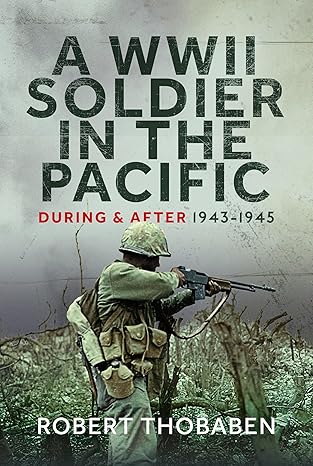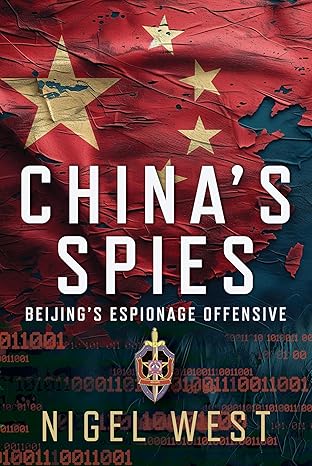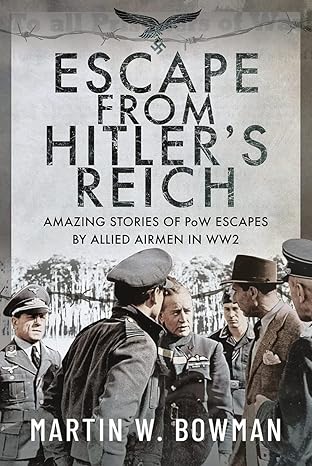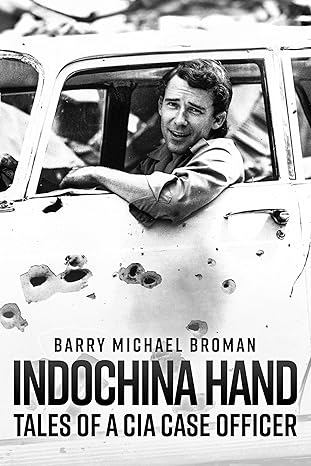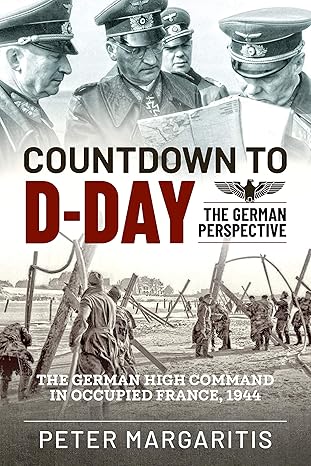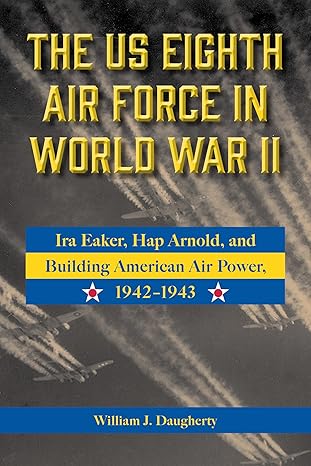Home / Transcontinental Convoys Contributions to Development of Army Motorization and Interstate Highway Development
Transcontinental Convoys Contributions to Development of Army Motorization and Interstate Highway Development
By Mike Miller
Intro
Occasionally one comes across references to the 1919 Transcontinental Convoy that traveled from Washington, D.C. to San Francisco. The significance of this and surrounding events is glossed over and treated as a minor historical occurrence hardly worth note. It has a greater impact and meaning to the motorization of the U.S. Army and development of the U.S. highway system deserving more attention.
The existence of what could be considered a national road system in 1919 was only notional and good paved roads between select cities existed only east of the Mississippi and in California. The rest of the rural roads in the country were graded gravel or dirt paths, at best some still only the remnants of wagon wheel ruts from western migration in the 19th century. With the introduction of the automobile, several hardy individuals and daring manufacturers dared to cross long distances in their vehicles as a challenge or to promote their products. In 1903, a single vehicle was able to make a transcontinental crossing in only 65 days.
Prewar
The U.S. Army had experimented with the use of motor vehicles in the years prior to the First World War. Even though motor vehicles were not very reliable the Army still saw potential. The Army maneuvers conducted around Boston in 1911 used motorization extensively and to very positive effect. In 1912, the Army undertook a very ambitious convoy consisting of four test vehicles of different manufacture. Traveling from Washington D.C. to Atlanta and finishing at Ft. Benjamin Harrison, Indiana, it covered 1,500 miles in 48 days. This was quickly followed later that year, by using those same trucks and additional leased ones, replacing mule drawn wagons to support a regimental march from Dubuque, Iowa to a training site in Sparta, Wisconsin, now Fort McCoy. The tremendous difference in load capacity of the trucks versus the traditional mule drawn wagons was particularly noticed.
In 1915, the Army moved a 1,000-man National Guard unit from New York City to maneuvers at Plattsburg, New York using fifteen donated trucks funded by private contributions. They made the trek in four days covering 400 miles. Again in 1915, 25 cadets from Northwestern Military Academy drove eight Cadillac motorcars from Chicago to San Francisco, a distance of over 2,000 miles, in 34 days.
With the undertaking of the Pershing Punitive Expedition of 1916 into northern Mexico, motorization of the Army got a tremendous boost. Unable to get cooperation of the Mexican authorities for the use of their national railroads, General Pershing, a cavalry officer commanding the expedition, realized that his forces would need a very large logistical supply train. Pershing initially ordered two truck companies, which he called “Flying Squadrons”, of 27 vehicles each. During the initial stages of the expedition, 60 cavalry mounts had to be destroyed due to lack of fodder which could not be supplied in quantity locally or by conventional wagon transport. This problem was corrected once enough motor transport was acquired to supply the expedition adequately. Eventually, 20 truck companies were operating inside Mexico alone, supporting the expedition. During the duration of the operation, the Army used 128 different makes and models of vehicles, which obviously caused problems for repair parts and maintenance. The experience gained, however, was useful in determining truck types and needed design improvements for America’s upcoming role in the war in Europe. Pershing’s after-action report recommended the creation of permanent truck companies by the Army for future field operations. Additionally, the Federal Aid Road Act of 1916, provided $75 million in matching funds for states to improve 6% of their roads.
World War I
The U.S. entered the war two months after Pershing’s expedition into Mexico and the Army benefited from the Allies three years of experience already gained in the use of motor transport for logistical support. U.S. manufacturers had been supplying the British and French and Italians with all types of motor vehicles, and the Army soon found itself in need of some new reliable motor transport.
From 1916 through 1918 the U.S. Army increased its motor vehicle inventory from 600 to over 82,500 vehicles. This was in addition to procuring 149,510 horses and 62,200 mules for draft and pack train use. The American Expeditionary Force used 294 different vehicle models and types of which 81 were of foreign make. This was all done in an emergency pace to fulfill immediate needs. After the Pershing Expedition in 1916, the Army attempted to introduce some vehicle standardization. Three classes were created, the “B”, “A”, and “AA,” based upon weight and load carrying capability. Only the Standard “B” was produced in quantity by several manufacturers and became known as the Liberty truck.
The Motor Transport Corps, redesignated as the Transport Service after the war, was created under the Quartermaster Corps, and was responsible for operating vehicles assigned to supporting its transportation mission. The Transportation Corps would not exist as an independent branch until 1942. Procurement and development of non-tactical vehicles was the responsibility of the Quartermaster Corps, while the Ordnance Corps had the same responsibilities for tactical vehicles such as tanks and armored cars.
Once the U.S. entered the war, the American domestic railroads proved incapable of handling the increased wartime demands to move troops and material in the United States. One solution was found by forming “truck trains” or convoys to help move new trucks being built in Detroit to eastern ports of Philadelphia, Baltimore and New York City for embarkation to Europe. This method accounted for the shipment of over 30,000 vehicles for the Army, and provided it much valuable experience in domestic convoy operations.
1919 Convoy
Several factors, military, political and economic, contributed to the idea of the 1919 transcontinental convoy. The U.S. Army found itself at the end of the First World War with a huge inventory and wide range of vehicle models which drove a need to continue the standardization process. The Army further wanted to test the most successful vehicle models it possessed in practical conditions. Pershing, in his Punitive Expedition After Action Report, made the recommendation of vehicle standardization and further reliance upon motor transport as a future necessity based upon the problems he encountered in Mexico. Pershing’s exulted position in the Army after the war, due to his wartime command of the AEF, made his previous recommendations even more persuasive.

www.eisenhowerlibrary.gov/research/online-documents/1919-transcontinental-motor-convoy
The Army developed the transcontinental convoy operation for multiple reasons. The premise for the convoy was an Asiatic power had invaded the western United States, and the railroads were not available or capable for moving troops and equipment to the western theater, like what was experienced during the previous war. Adding to this was a real anti-Japanese sentiment in the United States and suspicion of their territorial intentions along the Pacific Rim. This was a good argument at the time since a future conflict with Japan was seen as a reality. The Army proposed to test its ability and establish the equipment necessary to provide a defense of the country under such circumstances. The Army also wanted to use the convoy to gather as much good publicity after the completion of the Great War and maintain popular support during hearings in Congress regarding national defense. These hearings would result in the National Defense Act of 1920, that determined much of the defense policy and influenced defense funding for the next twenty years.
Several politicians were also interested in drawing attention to the condition of U.S. roads, system, which were in a very poor state and mostly nonexistent outside of urban areas. The Lincoln Highway Association, which was formed in 1913, had initiated a transcontinental route designated as the Lincoln Highway. The highway was mapped out, but much of it was only dirt trails in very poor condition. Several influential politicians and businessmen desired to obtain federal funds to make the highway a reality. The Townsend Highway Bill was then being considered in Congress for providing substantial funds for highway construction, and many saw that a convoy could establish the need in the public’s mind to support passing the legislation.

(wikimedia.org)
The third leg of support for the convoy mission was based upon economic interests. Industrialists were behind what was known as the Good Roads Movement. The auto, tire and oil industries saw the potential of better roads, increasing the use of their products and thereby increased profits. John Rockefeller (Standard Oil) and Harvey Firestone (Firestone Tires), both members of the Lincoln Highway Association and the Good Roads Movement, also supported the idea of the convoy. The route of the convoy would also take it to the Firestone Estate in Ohio as one of its official stops. Highway construction meant big profits to many contractors across the country where state funding for roads had been miniscule. The boost to the economy and competition for the railroads forcing lower rates were also promoted as a benefit for highway construction.
The First Transcontinental Convoy (termed the Motor Truck Train by the Army) left Washington D.C. on July 7, 1919, arriving in San Francisco 62 days later, on September 6th, a total distance of 3,251 miles, having traveled at an average speed of 6 mph and 58 miles per day. The convoy closely followed the route of the Lincoln Highway, guided by a pilot car provided by the Lincoln Highway Association. Today most of the convoy’s original route is covered by U.S. Highway 30, Interstate 80 and U.S. Highway 50.

https://americancarhistorian.com/1919-transcontinental-army-motor-convoy
The convoy was officially composed of 57 various military vehicles, plus trailers and a light tank loaded on a truck bed. Additionally, sixteen civilian vehicles traveled with the convoy to include press, automobile and tire representatives, and the fifteen-piece Goodyear Company Band. Military personnel consisted of 258 enlisted men of questionable driving experience and 24 officers. An additional 13 officers from various branches of the Army were also sent along as observers. Included were Lt. Col. Dwight Eisenhower and Major Sereno Brett, both representing the soon to be disbanded Tank Corps. Eisenhower’s final report on the convoy was seven pages long and noted the obvious poor condition of roads, the need for additional training of personal, and better equipment.

www.eisenhowerlibrary.gov/research/online-documents/1919-transcontinental-motor-convoy
The convoy was stocked with $75,000 worth of spare parts needed to repair the normal wear and tear in addition to the 230 vehicle accidents recorded during the trip. The convoy lost 9 vehicles on the way to California, which may have been greater if it had not been for a 4x4 three-ton wheeled truck known as a Militor Class B. It had been specially built to Army specifications for a multiple use truck at a cost of $7,000 per vehicle, over twice the cost of a mass-produced Liberty B truck. The Militor was a winch-equipped wrecker, with a spade on the back for leverage. It was powerful enough to have towed four vehicles simultaneously during the convoy. Only six prototypes of the Militor had been built at the time of the convoy, but it proved its worth many times over. Several vehicles in the convoy were also fitted with pneumatic tires, which were found to be superior to the solid rubber tires, then in common use on trucks. This made the Goodyear Company extremely happy which developed and promoted pneumatic tires.

https://en.wikipedia.org/wiki/Militor_truck

https://en.wikipedia.org/wiki/Militor_truck
Motorized convoy operations of this size and duration were a new concept, and this experiment helped to develop standard practices. Scouts were sent ahead on motorcycles along with engineers to ensure the route was marked and clear. The engineers would build or reinforce bridges to minimize delays before the convoy arrived. Rest for drivers was considered essential, with daily driving distances and rest breaks throughout the day taking this into account. A day of rest every six days was also enforced to prevent driver fatigue. Driver training in proper convoy operations and preventative maintenance was noted as a vital need for the future to improve performance.
1920 Convoy
A second transcontinental convoy was being organized as the 1919 convoy was still completing its journey. This was at the behest of the Bankhead Highway Association, which was organized to promote a transcontinental highway route through the southern states. It supported the defense need for a highway to move troops and supplies across the southwestern border with Mexico, still seen as a potential threat, and as an all-weather route across the country. Senator Bankhead of Alabama, grandfather of the movie actress Tululah Bankhead, headed this effort. The second convoy was composed of 32 officers and 160 enlisted men driving 50 vehicles of mixed types. It was commanded by the experienced Colonel John F. Franklin, who had overseen motor transport for the 1916 Pershing Expedition. The convoy departed Washington, D.C. on June 14, 1920, and arrived in San Diego on October 2. Its’ 111-day journey covered 3,450 miles and the convoy continued from San Diego to San Francisco for added effect. Another northern transcontinental route known as the Theodore Roosevelt International Highway, running from Portland, Maine to Portland Oregon was designated in 1919 through the U.S. and Canada, existed primarily in name only and later became U.S. Route 2.
Outcomes: Truck Design/Highway Funds/ Army Training and Doctrine
It has been estimated that over 3 million people saw the 1919 convoy in person, and an uncounted number saw newsreels and newspaper reports about its progress. The military continued work on standardization of trucks and eventually produced the excellent 2 1/2-ton truck series as its prime transport mover. Efficient convoy operations and training provided incalculable war winning support in World War II. The war with Japan did occur, but did not include an invasion of the western U.S. except the territory of Alaska. Eisenhower’s observations on the convoy operation are often cited as instrumental with him developing understanding problems with long distance logistical support which were useful during North African and Northwestern European campaigns of the Second World War.
Both the 1919 and 1920 convoys had some impact on the passage of the Townsend Highway Bill, which did finally pass in 1921 and provided $75 million a year of federal funding over five years for road construction. The last section of the original route of the Lincoln Highway was not completely paved until 1935, showing the slow progress of national highway construction, which was further delayed by the Second World War. After the war in 1956, Dwight Eisenhower as president signed into law the landmark legislation now known as the Dwight D. Eisenhower National System of Interstate and Defense Highways. Eisenhower’s convoy experience and observations of the roads in Europe, especially the German Autobahn has been credited for his promotion of a substantial federal highway system to promote commerce and support national defense needs. The Interstate Highway System was considered officially completed in 1991 and covers 46,837 miles, taking 35 years and costing $114 billion dollars. The Interstate Highway System did finally eclipse the railroads as the primary commercial transportation system in the United States.
| * * * |
Show Notes
| * * * |
© 2025 Mike Miller
Mike Miller received his Bachelor of Arts in Political Science at the University of North Dakota in 1978, and later his Master 's Degree in Distance Learning and Adult Education from the University of Phoenix. His military experience included service as an enlisted medic and he retired as a Major in the Military Police Corps. For over twenty years he worked with alternative education programs in California and North Dakota. Retiring in 2023, he continues to research multiple military topics of interest, especially concerning the Second World War.
* Views expressed by contributors are their own and do not necessarily represent those of MilitaryHistoryOnline.com.

